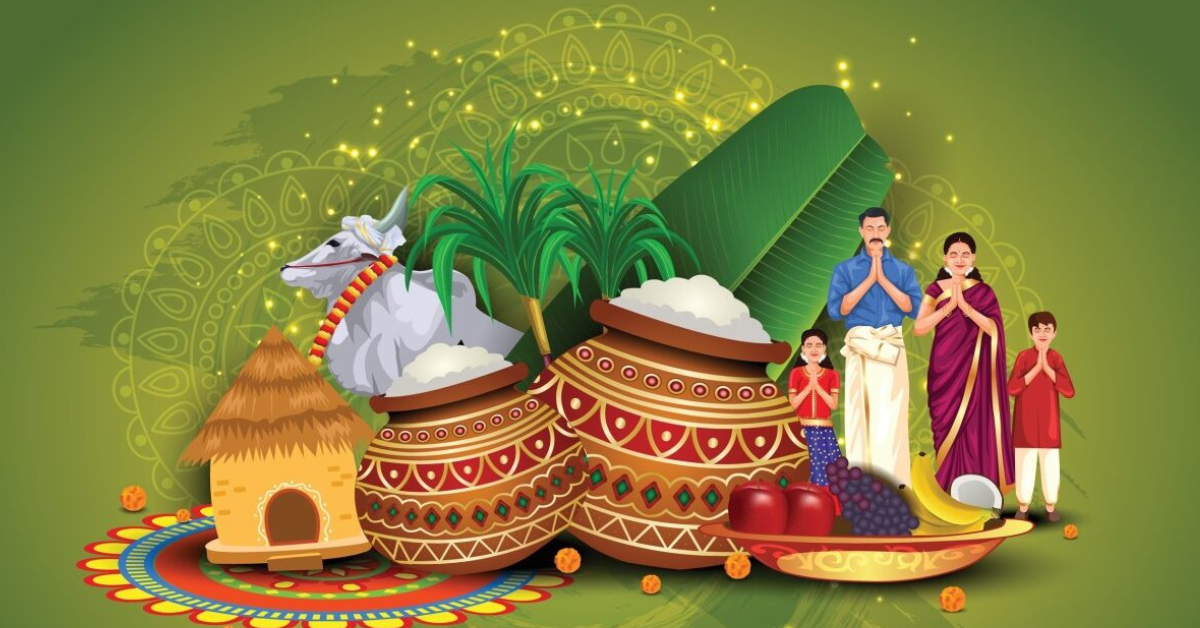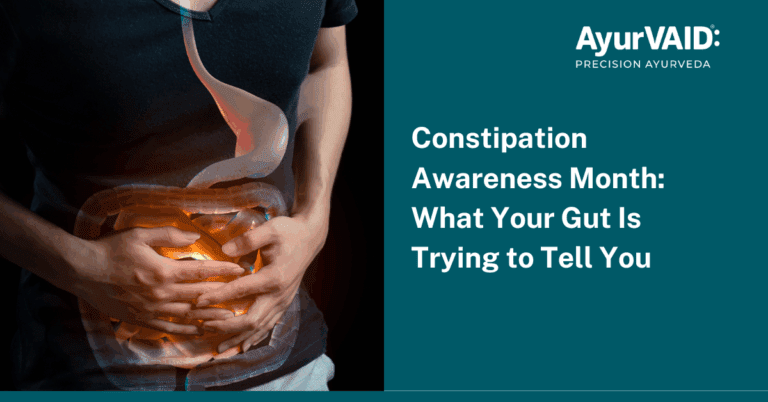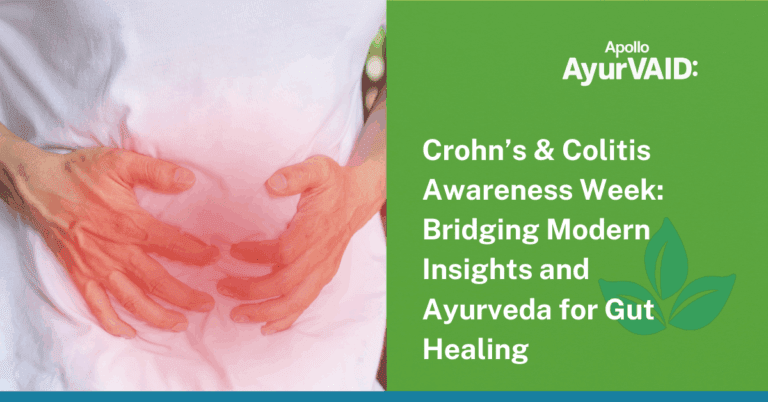Introduction
Makara Sankranti, a crucial seasonal transition in Ayurveda wisdom falls on January 14 this year. It marks the glorious occasion when the sun moves from the Tropic of Cancer (Karka) to the Tropic of Capricorn (Makara) crossing the winter solstice. Beginning with Bhogi on January 13, the festival represents the shift from Shishira Rtu (late winter) to Vasantha Rtu (Spring). It is known as Uttarayana and is believed to mark the arrival of spring (Vasantha Rtu) or the descent of devas. The Sun’s existence, movements, and positions in the cosmos play a major role in our circadian rhythm hence, this transition is pivotal in Ayurveda Rtucharya or seasonal regimen.
According to Ayurveda, during Shishira (winter), Kapha dosha builds up in the human body. But as Vasantha Rtu arrives, the sun’s warm rays liquefy the accumulated Kapha, which may lead to respiratory and skin problems. Proper Rtucharya helps the body adapt to these changing environmental conditions and reduces the risk of falling sick.
In this blog, let’s explore why Makara Sankranti is celebrated and how we can rejoice in seasonal variation while keeping ourselves healthy with Ayurveda wisdom.

How Makara Sankranti is Celebrated?
Makara Sankranti is a festival celebrated in various regions of India reflecting local customs and agricultural practices. Bhogi is the first day of the four-day Pongal festival. It is majorly celebrated in the southern states of Telangana, Tamil Nadu, and Karnataka.
The festival is celebrated within Karnataka, Andhra Pradesh, and Telangana wherein people exchange Ellu-Bella (the sesame seed with jaggery) and offer it to the God of Fire. It is celebrated in Maharashtra by preparing a sweet til-gul made from sesame seeds and jaggery, with Puran Poli prepared from dal and jaggery. It is celebrated in Punjab (as Maghi) by preparing khichdi and serving it with ghee and pickles. Pati Shapta is a coconut and jaggery-filled crepe prepared in West Bengal using newly harvested rice. In Odisha, Chakuli Pitha, a rice flour pancake is made and offered to Gods. Tamil Nadu celebrates Pongal as a harvest festival for four days- Bhogi Pongal, Surya Pongal, Mattu Pongal, and Kaanum Pongal- marking the end of the winter solstice and the sun’s northward journey.
Bonfires, cattle bathing, kite flying, taking a holy dip in rivers and offering prayers to the Sun God, visiting temples, making rangoli, and wrestling competitions are a few popular activities as a part of the festivity.
Why Makara Sankranti is Celebrated?
As mentioned, Makara Sankranti occurs during the transition between Shishira and Vasantha Rtu. Kapha dosha accumulates during Shishira (winter) due to cold weather and gets aggravated in Vasanta (spring) as warming temperatures liquefy accumulated Kapha.
Sesame seeds, sugarcane, and traditional dishes are prepared to symbolize prosperity and health, which is beneficial in balancing Kapha dosha. Fire ceremonies during Makara Sankranti symbolize renewal, purification, community cohesion, and cultural heritage, preserving cultural identity and passing down agricultural knowledge. They also help keep one warm during the winter and reduce excess Kapha. These rituals also reinforce community bonds and cultural identity through shared culinary practices.
Kite flying and wrestling are done after oil massage. Early morning exposure to sunlight ensures maximum Vitamin D absorption. Winter often leads to dry skin, and basking in sunlight after an oil massage moisturizes the skin and provides an antibacterial effect, thus preventing respiratory illnesses.
Food practices during the festival balance Vata and Kapha, aid digestion, and increase immunity and strength. The festival encourages the community to come together and celebrate, which helps maintain mental and emotional health through collective prayers.
The regional variations in Sankranti celebrations reflect local dosha patterns and utilization of regional crops. Jaggery and til are consumed in Gujarat and Maharashtra; rice-based specialties are prepared in Bengal and Odisha, and Punjab will include warm items like khichdi and jaggery.
Food Articles to be Included
The traditional foods of this festival reflect the timeless wisdom of Ayurveda. Each ingredient commonly used during Makara Sankranti carries specific health benefits:
- Sesame is ushna (hot potency), keshya (promotes hair growth) and balya (provides strength). Consuming the oil-rich sesame seeds in this season helps generate internal oleation and body heat, thus preventing aggravation of Kapha dosha in Vasantha.
- Jaggery is sweet and has hot potency. Consuming it during this season helps alleviate Vata.
- Various regions prepare special rice-based dishes like Chakuli Pitha (in Odisha), Pati Shapta (in West Bengal), and Sweet Pongal (in Tamil Nadu), which incorporate newly harvested rice along with Jaggery. Freshly harvested rice is heavy and sticky, and the combination of newly harvested rice with jaggery is comparatively heavy. The digestive fire is strong during winter, so consuming these delicacies avoids hunger pangs.
Makara Sankranti traditionally marks the last indulgence in sweets made from jaggery and freshly harvested rice. As these can increase Kapha dosha, avoid consuming them in the upcoming Vasantha Ritu (spring season) when Kapha naturally tends to rise.
Cleansing and Renewal
The post-festival period is ideal for Panchakarma therapy, especially Vamana (therapeutic emesis). Many people observe fasting, which helps to bring down the accumulated Kapha. These seasonal preparations help the body sync with the upcoming transition and benefit overall health.

Conclusion
Makara Sankranti is an ancient festival meant to showcase the influence of seasonal changes on the human body and health. Participating in community activities with certain rituals and prescribed foods such as sesame and jaggery, would help sustain health during the change between Shishira Rtu to Vasantha Rtu. It is performed just before Vasantha Rtu when Kapha dosha is known to increase naturally. It is the final celebration of consuming sweet food before moving to lighter food in spring. This is the right time for Panchakarma therapies like Vamana to help the body detoxify. During this Makara Sankranti let us keep our body, mind, and soul healthy by following the rituals and food prescribed by Ayurveda.
References
- Umate, P R et al. (2021). A Review on the Clinical Aspect of Guda (jaggery) in Brihatrayi and laghutrayi. International journal of current research and review, 13, 51-63. https://doi.org/10.31782/IJCRR.2021.13718
- Sahu, C K (2015). Makar festival of Mayurbhanj: at a glance. International journal of research in social sciences, 5, 163-172. https://www.semanticscholar
.org/paper/36007
afe1cdffaa24814fa8a84f
0192d492df09c - L, P, G, L (2022). Thai Pongal in the life of the Vellalars of Karimangalam Area. International Research Journal of Tamil. https://doi.org
/10.34256/
irjt22220 - Tavhare, S et al. (2024). Dietary therapeutics of rice and Ayurveda: A bird’s eye view. Journal of Drug Research in Ayurvedic Sciences. https://doi.org/10.4103/jdras.jdras_263_24
- Mohammed, S (2022). An Overview on Nutritional Composition and Therapeutic Benefits of Sesame Seeds (Sesamum indicum) International Journal for Research in Applied Science and Engineering Technology. https://doi.org/10.22214/ijraset.2022.40002






